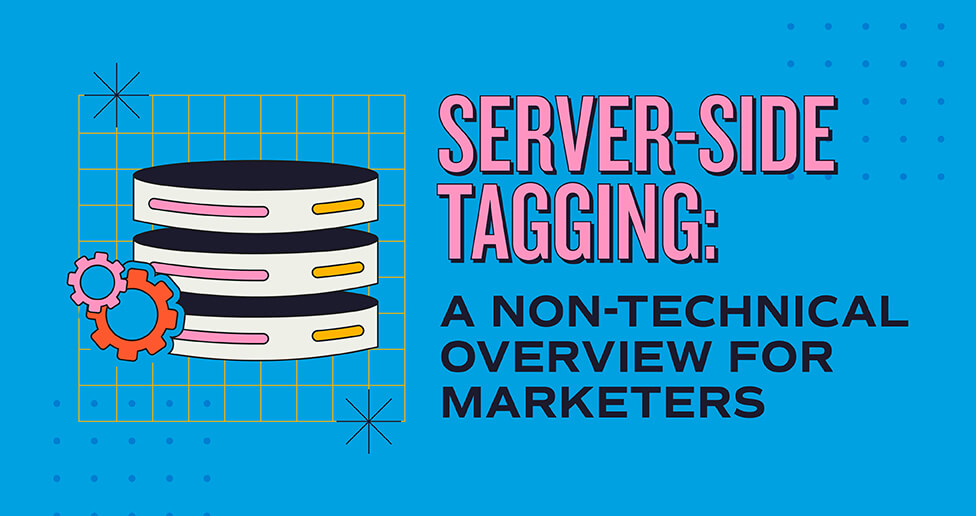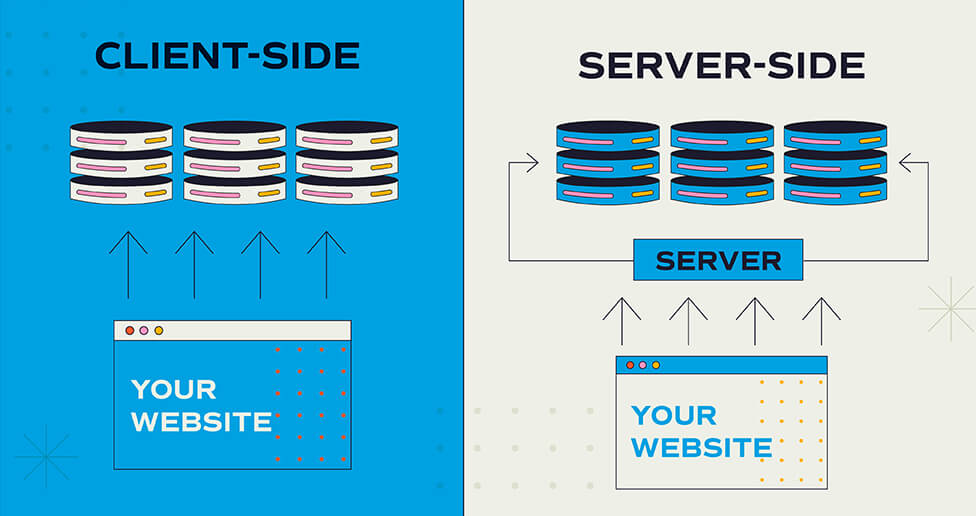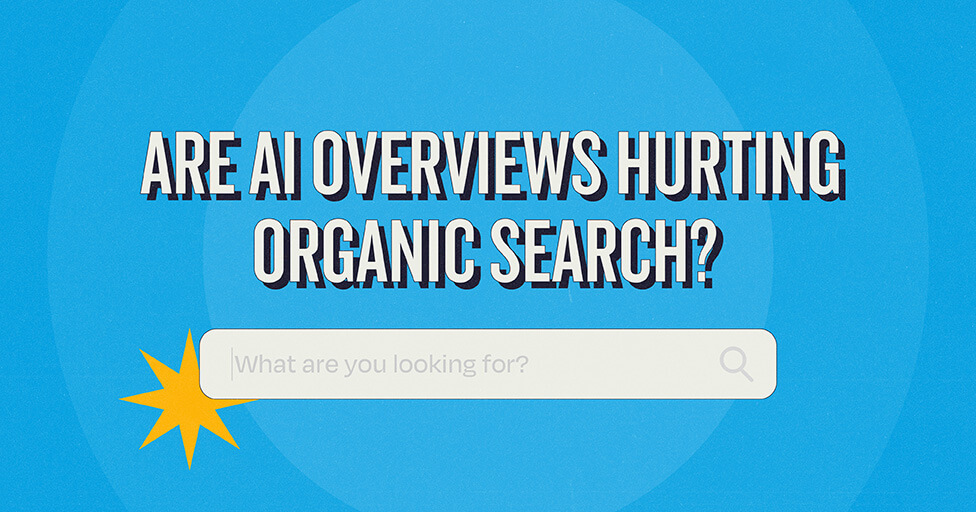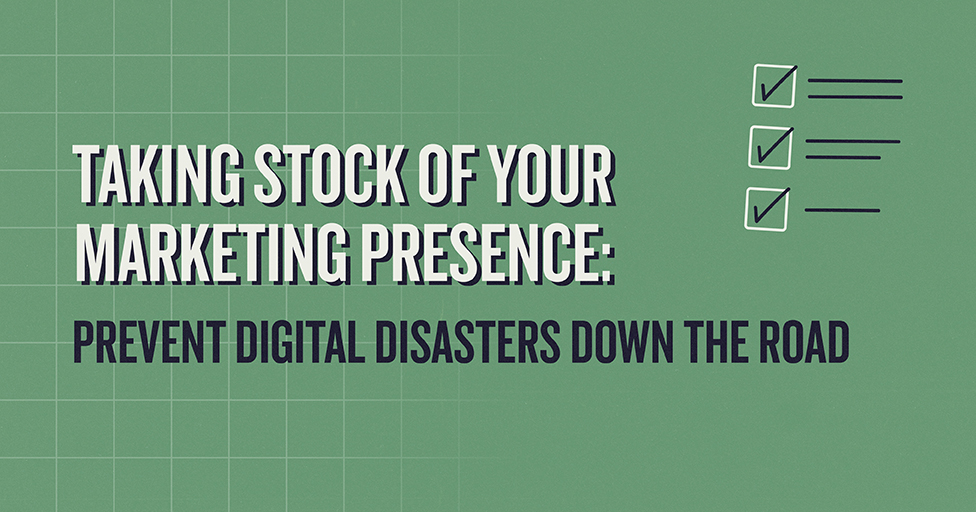
Stop us if you’ve heard this one before: 3rd-party cookies (used heavily in tracking and ad-serving technologies) are going by the wayside. We started talking about this back in 2020, and it’s still going on to this day. The largest shoe yet to drop is Google Chrome’s browser, which has nearly two-thirds share of the global market and has shared its intent to complete their 3rd-party phase out by the end of the year (although some groups are challenging that).
Regardless of the specific timing, it’s evident that the world needs to move beyond third-party cookies for tracking website behavior in order to draw forth insights that can impact brand and businesses alike. One such technology that has been gaining attention is Server-Side Tagging (SST). In this article, we’ll attempt to help non-technical marketers grasp what SST is, why it’s becoming increasingly important, considerations before migrating to SST, and a wrap-up of why this matters.
What is Server-Side Tagging?
At its core, server-side tagging is a method of collecting and sending data from your website to third-party services (like Google Analytics, Meta Pixel, etc.) through a server rather than directly from a user’s browser. Traditionally, when a user visits a website, tags embedded in the website’s code send data directly from the user’s browser to third-party services.
SST shifts this process. This means that when a user interacts with your website, the data goes first to a server you control (or a cloud server you manage), and then this server sends the data to the necessary third-party services. This server acts as an intermediary, providing you more control over the data sent out and lifting your site from relying on 3rd-party cookies.

Why is SST Important?
The digital marketing landscape is undergoing a significant shift with the phasing out of third-party cookies. This change challenges marketers to find new ways to collect valuable user data while respecting privacy regulations. SST offers several advantages in this new environment:
- Privacy Compliance: SST can help in complying with privacy regulations like GDPR and CCPA by centralizing data collection through a server and affording you greater control over what data is shared.
- Improved User Experience: With SST, websites can load faster since fewer third-party tags are loaded directly in the user’s browser. Faster websites are proven to lead to better engagement and conversion rates.
- Enhanced Data Security: By controlling the data through your server, you reduce the risk of data leaks or breaches, ensuring that sensitive user information is more secure. For example, you can strip out details, like IP address or User ID, before sending data to third-party providers.
- Reduced Impact of Ad Blockers: You may be missing out on events entirely if the user has an ad blocker or is using a browser that limits what data is shared to third-party cookies. As SST moves the data collection from the browser to your server, you get a truer view of what data your site is generating, which has direct benefits to efficiently managing your website, your media, and ultimately your business.
- Data Integration: With data coming from various data sources to one server, you can consolidate and integrate the data. This will give you a better understanding of your users.
Considerations Before Migrating to SST
Migrating to server-side tagging is not a simple switch, and it does require careful planning. Here are key considerations to keep in mind:
- Technical Expertise: Implementing SST requires a certain level of technical know-how. You might need to collaborate with your IT department or hire specialists to set up and maintain the server infrastructure.
- Costs: Depending on your setup, there might be costs associated with server hosting, maintenance, and possibly higher fees for using cloud-based server solutions.
- Data Accuracy: As you transition to SST, verifying that data is accurately collected and sent to third-party services is crucial. This might require testing and validation to ensure that your analytics are not compromised.
- Vendor Support: Ensure that the third-party services you use support server-side integration. While many major platforms support SST, some services might only work with traditional, browser-based tagging.
Real World Comparison
To understand the differences between SST and standard analytics tracking, we ran both simultaneously on our website for a 90-day period. The results showcase the various benefits we’ve articulated throughout this article.
Server Side Tagging saw improvements across the following metrics:
- +22% in Sessions
- +14% in Users
- +10% in Engaged Sessions
- +49% in Goal Conversions, and +31% in goal conversion rate
- +18% in Facebook Pixels pageviews
SST allows us to have a more complete picture of our website or app activity, thus instilling a higher degree of confidence in the data and the insights and recommendations we make from them.
Conclusion
Server-side tagging emerges as a beacon for brand marketers navigating the post-cookie world. Its benefits in terms of privacy compliance, user experience, and data security align with the current needs of both brands and consumers. However, the transition to SST requires careful consideration of technical requirements, costs, data accuracy, and vendor support.
For marketers and advertisers, the move toward SST is not just about adapting to a cookie-less future but about taking proactive steps to enhance the control, privacy, and effectiveness of digital marketing efforts. While it may seem daunting, the long-term benefits of embracing server-side technologies can position your brand for success in an increasingly privacy-focused digital landscape.
Subscribe to our newsletter
Get our insights and perspectives delivered to your inbox.


